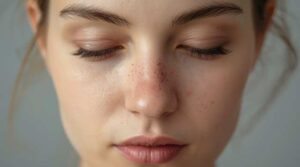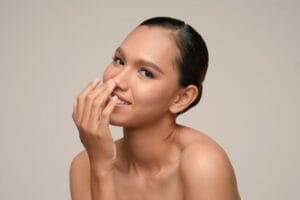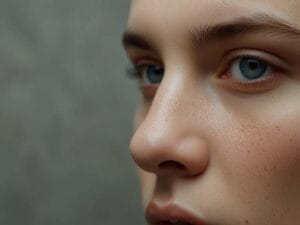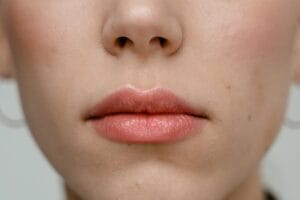Bumps and Lumps After Rhinoplasty: What to Expect During Recovery
You’ve finally had the rhinoplasty you’ve been planning for months. The swelling is starting to go down, the bruising is fading—but wait. What’s that bump on the bridge of your nose? And why does it feel lumpy when you gently touch the tip? If you’re experiencing bumps and lumps after rhinoplasty, you’re not alone. This is one of the most common concerns patients bring up during follow-up appointments.
Here’s the thing: your nose is going through a complex healing process. While some irregularities are completely normal and temporary, others might need attention. Let’s break down what’s really happening beneath the surface, when you should be concerned, and what you can realistically expect as your nose settles into its final shape.
Quick Answer: What causes bumps after rhinoplasty?
Bumps and lumps after rhinoplasty typically result from post-surgical swelling, scar tissue formation, or fluid accumulation. Most irregularities resolve naturally within 6-12 months as swelling subsides. However, persistent bumps may indicate callus formation or require minor revision.
Why Bumps and Lumps Form After Nose Surgery
When a surgeon reshapes your nose, they’re working with bone, cartilage, and soft tissue—all of which respond to trauma in their own way. The body’s natural healing response involves inflammation, which means swelling. But that’s just the beginning of the story.
In many cases, what feels like a hard lump is actually residual swelling that hasn’t fully resolved. The nasal tip, for instance, can remain swollen for up to a year or longer. That said, there are other culprits worth understanding.
Scar Tissue and Internal Healing
Scar tissue develops wherever incisions are made or cartilage is manipulated. During the first several months post-surgery, this scar tissue can feel thick, firm, or even irregular. It’s part of your body’s repair mechanism, though it doesn’t always lay down in perfectly smooth layers. Over time—typically six to twelve months—scar tissue softens and remodels itself, which often means those bumps you’re worried about will gradually flatten out.
Callus Formation on the Nasal Bridge
If your surgeon performed an osteotomy (breaking and resetting the nasal bones), your body may form a callus as the bones heal. Think of it like what happens when you break an arm—the bone thickens slightly at the fracture site. On the nose, this can show up as a visible or palpable bump along the bridge. Most of the time, this callus diminishes as the bone fully heals, but in some patients, a small amount of the irregularity persists.
Bumps and Lumps After Rhinoplasty: Fluid Accumulation and Edema
Lymphatic drainage in the nose can be sluggish after surgery, leading to pockets of fluid that feel squishy or gel-like under the skin. This is especially common in the supratip area—the region just above the nasal tip. These fluid collections usually resolve on their own, though some surgeons may recommend gentle massage or even a small needle aspiration if the swelling lingers.
When Lumps Are Normal vs. When to Be Concerned
So how do you know if that bump is just a normal part of healing or something that needs medical attention? Honestly, it’s not always clear-cut—which is exactly why follow-up appointments exist.
Normal Post-Surgical Bumps
- Soft, mobile lumps that shift slightly when pressed—these are usually fluid or soft tissue swelling
- Bumps that fluctuate in size throughout the day or over weeks—swelling often worsens in the morning or after activity
- Irregularities that appear within the first 3-6 months and gradually improve—this timeline aligns with normal scar tissue maturation
- Mild asymmetry that your surgeon says is within expected range—remember, healing doesn’t always happen symmetrically
Red Flags That Warrant a Call to Your Surgeon
- Sudden onset of a painful, red, warm bump—this could indicate infection or abscess formation
- A hard, fixed lump that grows over time—while rare, this might suggest abnormal scar tissue or other complications
- Drainage, foul odor, or fever accompanying the bump—signs of infection that require prompt treatment
- Bumps that don’t improve after 12-18 months—at this point, the healing process should be largely complete
Most patients find that staying in close contact with their surgical team during the first year provides peace of mind. Clinicians report that many concerns can be addressed with reassurance and education, though some do require intervention.
How Long Does It Take for Bumps to Go Away?
The catch with rhinoplasty recovery is that it’s a marathon, not a sprint. While most of the dramatic swelling resolves in the first few weeks, the subtle changes—the ones that determine your final result—can take a year or more to fully manifest.
Bumps and Lumps After Rhinoplasty: The Rhinoplasty Healing Timeline
- Weeks 1-2: Major swelling and bruising peak and begin to subside. Any bumps at this stage are almost certainly just swelling.
- Months 1-3: About 50-60% of swelling resolves. You’ll start to see your new shape, but the nose still feels stiff and may have visible irregularities.
- Months 3-6: Another 20-30% of swelling disappears. Scar tissue begins to soften, and many bumps start flattening out.
- Months 6-12: The final 10-20% of swelling gradually resolves. This is when subtle refinements become apparent.
- 12+ months: Your nose reaches its final form. If bumps remain at this point, they’re less likely to improve without intervention.
That said, these timelines vary. Thick-skinned patients often experience longer swelling periods than those with thin skin. Revision rhinoplasty patients may also heal more slowly due to scar tissue from previous surgeries.
Treatment Options for Persistent Lumps After Rhinoplasty
What if you’ve passed the one-year mark and that bump is still there? In my practice, I’ve observed that while most irregularities do resolve, some require a little help.
Non-Surgical Interventions
Steroid Injections: Corticosteroid injections can help shrink stubborn scar tissue or persistent swelling. Your surgeon injects a small amount of diluted steroid directly into the problem area. It’s a quick office procedure, though results may take a few weeks to become apparent. Multiple sessions are sometimes needed.
Massage and Lymphatic Drainage: Gentle, targeted massage can encourage fluid drainage and help soften scar tissue. Some surgeons recommend this starting a few weeks post-op, while others prefer to wait until the nose is less fragile. Always follow your surgeon’s specific guidance—aggressive massage too early can do more harm than good.
Taping: Some practitioners use specialized taping techniques to apply gentle, consistent pressure to areas prone to swelling or irregularity. This is more common in the first few months of recovery, but can occasionally be helpful later on.
Bumps and Lumps After Rhinoplasty: Revision Rhinoplasty for Structural Issues
If the bump is due to bone or cartilage irregularity—rather than just soft tissue swelling—a minor revision rhinoplasty procedure may be the most effective solution. This might involve smoothing down a bony prominence, repositioning cartilage grafts, or refining scar tissue.
Revision procedures are typically less invasive than the original surgery, especially if the issue is isolated to one small area. However, it’s critical to wait until full healing is complete—usually at least 12 months—before making this decision. Rushing into revision can complicate healing and lead to suboptimal results.
Tips to Minimize Bumps and Optimize Healing
While you can’t entirely control how your body heals, there are steps you can take to give yourself the best shot at a smooth result.
Follow Post-Op Instructions to the Letter
This might sound obvious, but compliance really matters. Avoid activities that increase blood flow to the face—like bending over, heavy lifting, or hot showers—during the early weeks. Keep your head elevated while sleeping. Don’t bump or press on your nose. These precautions reduce swelling and minimize the risk of complications.
Bumps and Lumps After Rhinoplasty: Be Gentle with Your Nose
It’s tempting to poke and prod at every little irregularity, but resist the urge. Excessive touching can irritate tissues and potentially worsen swelling. If your surgeon approves massage, use gentle, controlled motions—nothing aggressive.
Stay Hydrated and Eat Well
Proper nutrition supports tissue repair. Protein, vitamin C, and zinc are particularly important for wound healing. Staying hydrated helps your lymphatic system flush out excess fluid more efficiently.
Bumps and Lumps After Rhinoplasty: Avoid Smoking and Limit Alcohol
Smoking constricts blood vessels and impairs healing—it’s one of the biggest risk factors for complications after any surgery. Alcohol can increase swelling and interfere with medications. Both are best avoided, at least during the critical first few months.
Protect Your Nose from the Sun
UV exposure can worsen scarring and prolong inflammation. Use a broad-spectrum sunscreen on your nose once your surgeon gives the okay, and consider wearing a hat when outdoors.
Real Patient Experiences: What to Realistically Expect
One of the most valuable things you can do during recovery is talk to others who’ve been through it. Online forums and rhinoplasty recovery communities are filled with stories that mirror your own concerns.
Most people report that the bumps they worried about at three months were barely noticeable by six months and completely gone by a year. But here’s what many patients find surprising: the nose can look different from week to week. One day it seems perfect, the next day you notice asymmetry or swelling. That’s completely normal and doesn’t mean something’s gone wrong.
Patience is the hardest part. You’ve invested time, money, and emotional energy into this surgery, and it’s natural to want instant results. But the reality is that rhinoplasty results mature slowly. Trust the process—and trust your surgeon’s assessment.
Bumps and Lumps After Rhinoplasty: When to Consider a Second Opinion
If you’re concerned about a persistent bump and your surgeon dismisses your worries without thorough examination or explanation, it’s reasonable to seek a second opinion. A fresh set of eyes—particularly from a board-certified facial plastic surgeon—can provide clarity and reassurance.
That said, it’s important to give your original surgeon the opportunity to address concerns first. They know your surgical history, your anatomy, and what was done during the procedure. Open communication often resolves questions before they escalate into serious worries.
Bumps and Lumps After Rhinoplasty: Understanding Scar Tissue Remodeling
Scar tissue doesn’t just form and stay put—it goes through phases. Initially, it’s thick and disorganized. Over months, enzymes break down excess collagen, and the scar tissue becomes thinner and more organized. This remodeling phase is why bumps often improve significantly between months six and twelve.
According to research published by the National Institutes of Health, wound remodeling can continue for up to two years, though the most dramatic changes happen in the first year. This is why surgeons are often hesitant to perform revisions too early—the tissues are still actively changing.
Thick Skin vs. Thin Skin: Does It Matter?
Absolutely. Patients with thick nasal skin often experience more prolonged swelling and may have more difficulty seeing fine details in their result. Conversely, those with thin skin see changes faster—but any irregularities in the underlying structure can be more visible. Your skin type affects both how quickly you heal and how apparent any bumps or lumps might be.
Common Myths About Post-Rhinoplasty Bumps
Let’s clear up some misconceptions while we’re at it.
Myth: If you have a bump at three months, it’s permanent.
Not true. Three months is still early in the healing process. Many bumps continue to improve well beyond this point.
Myth: Massage will fix everything.
Massage can help, but it’s not a cure-all. Structural issues require different solutions, and improper massage can sometimes make things worse.
Myth: Bumps mean the surgery was botched.
Not necessarily. Even perfectly executed surgeries can result in temporary irregularities as the tissues heal. This aspect is often overlooked in discussions about rhinoplasty outcomes.
Myth: Everyone heals the same way.
Far from it. Genetics, skin type, surgical technique, and post-op care all influence how your nose heals. Comparing your recovery to someone else’s can be misleading.
Final Thoughts: Patience and Perspective
Dealing with bumps and lumps after rhinoplasty can be frustrating. You’ve committed to a significant procedure, and you naturally want to see perfect results immediately. But here’s the key point: most irregularities you notice in the early months are temporary. Your nose is still healing, scar tissue is still remodeling, and swelling is still resolving.
Stay in close communication with your surgeon. Ask questions. Voice concerns. But also give your body the time it needs to complete the healing process. In the vast majority of cases, patience pays off. And if intervention is needed down the road, you’ll be in a much better position to make informed decisions once full healing has occurred.
Remember, rhinoplasty is as much about the journey as the destination. The result you see at one year—or even eighteen months—will likely be quite different from what you’re seeing today. Trust the process, take care of yourself, and know that those bumps and lumps are usually just part of the story your nose is telling as it heals.














Post Comment